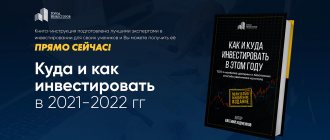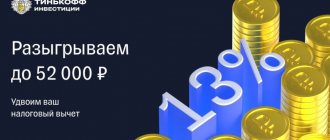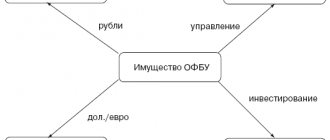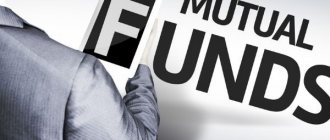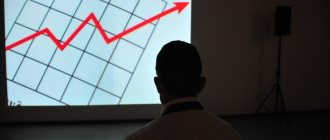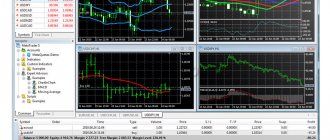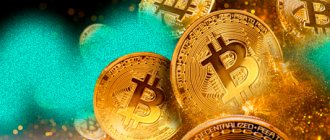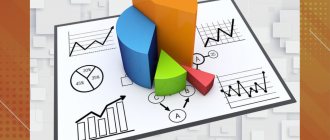An investment strategy involves choosing an asset class in which to invest at a given time. The formation of an investment portfolio is carried out by distributing money in the proportion dictated by the market. To get a picture of the state of the stock market in terms of securities in certain categories, there are stock indices.
It is not possible to purchase a share in the index because... index is a virtual concept. But you can invest by purchasing securities from an index or a share of an index fund.
What are stock exchange indices?
An exchange or stock index is a dimensionless quantity that characterizes the state of liquidity of assets in a particular sector of the financial market or the economy of one or more states. In the physical sense, this is a set of securities united by a common characteristic. Indices reflect changes in the prices of assets that are quoted on the world or national stock market.
The index is calculated using a specific algorithm that takes into account the share of each component in the overall index basket. Because Since the stock market does not stand still, the size of these shares must be periodically reviewed. This process is called index rebalancing.
Principle of index strategy
Buying shares of companies included in the index in exactly the same proportion. As a result, you buy not just one or two assets, but almost the entire market. In this way, you significantly reduce the risks from negative impacts caused by a possible sharp drop in quotes for individual stocks.
Throughout the history of stock markets, indices have only gone up. And this is understandable. The world economy is based on the principle of constant development and growth. And this has been confirmed for 4 thousand years. Population growth, industrial development and scientific and technological progress simply push the economy upward. Let’s not forget the increase in the well-being of the population or, in other words, the standard of living. People have more money, they spend more and, accordingly, create demand for new and new products.
Look at historical stock index charts. Absolutely everyone is growing. Of course there are also falls. There is no escape from this. The economy develops cyclically. And every 10-15 years crises occur. But after them comes new growth, which gives a new impetus to the economy and an increase in stock prices, including the index.
Dow Jones 100 Year Index
German index - DAX
Types of stock exchange indices
Stock indices can be classified according to the following criteria:
- Industry – a set of securities of a certain economic sector (for example, shares of oil producing companies).
- Composite – securities of various industries. Quotes for these financial instruments reflect the state of the economy of one or more countries (for example, blue chip stocks).
Index calculation methods
There are two main methods used to calculate stock indices:
- Average. This method is the simplest, but not very revealing. For calculation, quotes for all securities are summed up and divided by the number of participating companies.
- Weighted average. This takes into account the capitalization indicators of all companies. The calculation formula looks like this:
AVERAGEVALUE=
; Where Cap is a capitalization indicator that can be taken from official websites.
In turn, capitalization is an indicator of the investment attractiveness of a company. The formula for calculating capitalization is as follows: Cap = Number of shares * market price.
Major stock indices
Here are examples of the main indices that you have probably heard of:
- Dow Jones Industrial Average. This is the first stock index in history, created by financier Charles Henry Dow in 1884. The index was then called the Dow Jones Transportation Average. It included shares of eleven leading American transport companies. Today the index is based on the performance of twenty companies. The second index, developed later by Charles Dow, is the most popular today. It is called the Dow Jones Industrial Average and is calculated by the indicators of thirty industrial corporations.
- The S&P 500 is the second largest American stock index, comprising the 500 US companies with the highest capitalization rates.
- FTSE 100 is the key index of the London Stock Exchange, which is calculated using indicators of 101 assets of large multinational companies. It is calculated using a complex formula using the dynamic index Index divisor, which is defined as the ratio of the capitalization of the index to its value.
- MICEX – index of the Moscow Interbank Currency Exchange. Includes 50 blue chip stocks. Calculated in rubles.
- RTS is the second largest indicator of the Russian stock market. Currently includes a list of 41 constituents, 5 of which are foreign issuers. The RTS index is calculated in US dollars.
- NASDAQ – indices of the American stock exchange of the same name, the second largest after the New York Stock Exchange. There are more than 40,000 NASDAQ-based indices. The most famous are NASDAQ Composite, After Hours NDX, NASDAQ 100, NASDAQ Biotechnology.
- Nikkei 225 is a Japanese stock exchange index that includes 225 companies. Based on the Japanese Yen and calculated by taking a weighted average.
- DAX is a German index that is an indicator of the German economy. It is calculated by the indicators of 30 large German companies whose securities are traded on the Frankfurt Stock Exchange.
Advantages and disadvantages of index investing based on the example of the Moscow Exchange index
In every strength there is a weakness, in every weakness there is a strength. Yin Yang
The Moscow Exchange index at the beginning of 2022 consisted of shares of 36 largest companies (39 shares in total), the share of each of which is determined in proportion to the capitalization of free float (free float shares), but the maximum share of an individual asset in the index cannot exceed 15%.
The main advantage of an index portfolio is its consistency. The index's ingenious simplicity is based on common sense: the nation's largest companies contain a significant share of human labor that creates social utility and added value for shareholders. Along with the technical simplicity of compiling an index portfolio, the hardest competitive struggle of companies for a place in the index does not stop for a minute. The “threshold” itself for a stock to be included in the index is a system of selection (natural selection) of the most viable and economically in demand companies.
Once upon a time, at a seminar organized by the RTS exchange, we asked the question: “Is the exchange going to convert the popular RTS index into a ruble valuation?” As an argument, we used the experience of other economies where stock indices are calculated exclusively in national currencies. To which irony arose in the hall - they say, in our country everything is measured in “bucks”. Then we drew attention to the fact that emerging index funds that invest in accordance with the structure of the RTS index are, by definition, in rubles, and their returns will also be calculated in rubles. And since investments are made in Russian business, and the index is actually a capital management system, it is logical that the result should be denominated in rubles. After this, there was laughter in the hall and most of the seminar participants (employees of investment and management companies), as well as representatives of the exchange, answered: “What are you guys, what kind of capital management system? It’s just an index - it’s calculated!”
Thanks to this systematic approach, index portfolios outperform most speculators over the long term. This is where speculators will of course argue, claiming that they are using more advanced “systems” to make trades. Yes, their “systems” look much more complex and scientific. These are all kinds of sets of technical indicators, rules for using stop losses and take profits, etc. But all of these, in our opinion, are pseudo-systems, which are often based on neither economic logic nor common sense. It is very difficult for the creators of such complex pseudo-systems to believe in the simplicity and effectiveness of index investing also because the index does not create illusions of rapid enrichment, but simply reflects the progressive development of the business. The average return that stocks bring in the long term (plus 4-5% per year to the inflation rate) is not amazing. But with long-term and regular investment, taking into account compound interest, this seemingly low return can provide a fantastic result.
Pros and cons of index investing
Index investing has several significant advantages, but there are also disadvantages. Let's look at the strengths and weaknesses.
Pros of Index Investing
- Easy to operate. You do not need to have any specific knowledge to manage a portfolio. It is enough to use stock market indicators.
- Diversification, which reduces risks. Even if some securities turn out to be unprofitable, the profits from others will cover the loss.
- Tax savings. There are no taxes charged during the investment period. Only upon receiving money and closing a position will you have to pay personal income tax in the amount of 13%.
Disadvantages of Index Investing
- Long investment periods. It will take more than one year to make a profit from the index. Otherwise, income will be minimal or non-existent. This circumstance follows from diversification.
- Lower returns compared to individual company stocks. This makes up for the fact that the risk of index investing is lower than that of individual securities.
Investing in indexes - pros and cons
Let's look at what investors can benefit from using an index-following strategy. Namely, is she really that good? And besides the advantages, what serious disadvantages does it have that can spoil all the advantages.
Advantages
As always, we start with the merits.
- Buying an index allows you to buy the entire market, rather than just individual stocks. And since the economies of all countries have always been growing throughout world history, it is quite reasonable to assume that in the future we will continue to observe positive dynamics of index growth.
- The index includes only reliable companies in the country. Therefore, we invest our money not in some “Horns and Hooves”, which could easily go bankrupt in a year or two, but in the largest companies.
- A systematic review of the index composition ensures that “bad” companies are excluded from it and replaced with more promising and reliable ones. This is controlled by the exchange.
- An index-following strategy provides excellent diversification. When the share of each asset in your portfolio is small and even the financial problems that arise in it, which will certainly lead to a decrease in quotes on the stock market, will have virtually no effect on the value of your total assets. Thus, willy-nilly, you will comply with the money management rule. By the way, it is one of the 3 components of successful investments.
- Lack of free cash in the portfolio. That is, your money will always work, and not wait for potentially profitable transactions. This also leads to increased profitability.
- Low entry price. Buying the entire market will cost you only a few thousand rubles or $50-100. This is how much the minimum lot of the index costs.
- Lack of trading skills. There is no need to learn the basics of trading, look for promising stocks, or track markets. All you have to do is simply buy the index.
- Time. Similar to the previous point. To purchase an index you will need to spend 3 minutes (of which 2 minutes you will download the trading terminal).
- Taxation. There is a 13% tax on income from trading on the stock market. But until you sell the index, you will have what is called a “paper profit.” And no tax is taken from it, unlike active trading.
- Higher profit potential. As already described above, using a strategy gives a high probability of receiving much greater income compared to others.
Flaws
After reading about the advantages, a simply ideal picture of successful investing emerges. But before you run to deposit money and buy such financial instruments, you need to know about the disadvantages, so that you can then make the right decision.
- Time to invest. This is the most important and serious drawback. The recommended period for using the strategy is several years. Ideally, several decades. It is during this period that all serious deviations in quotes associated with periodically occurring crises are leveled out in the market.
- Profitability in the short term can be much lower than that of most players. So, over a period of 1 year, the share of successful traders and investors who outperformed the index is approximately 60%. Over a 2-year period, their number decreases to 45%. At the 3-year term, only about 24% remains. Well, in the 5th segment there are only 5-7% of such “lucky” people left. It is morally very difficult to stick to your chosen strategy when others are getting much higher returns.
- Limited number of shares in the index. On the one hand, these are the largest and most reliable stocks. But this is also their disadvantage. Their growth potential is not as great as that of third-tier shares, which can show a 100% increase in value in just a year. With such giants as Gazprom, Rosneft and Magnit, this probability is not so great (although there are exceptions - Sberbank doubled in 2016).
- When the economy falls, the entire index will fall. While individual stocks can continue to grow quite significantly.
- Conservative profitability. Due to the wide diversification of assets included in the index, on the one hand, you receive almost complete protection of your capital, but on the other hand, growth will always be limited. By placing your money on one “right asset”, you can make a profit several times greater than the total return of the index over the same time.
How to start investing in an index
Index investing is the purchase of securities in proportion to the components of the index. You can do this in several ways:
- independent portfolio formation;
- purchasing an index on the stock exchange;
- investing in mutual funds;
- investing in ETFs.
Next, we will consider for which categories of investors each method is suitable.
The first method is the simplest. However, it must be taken into account that the structure of the index is constantly changing. Therefore, you will have to regulate the structure of your portfolio yourself: sell shares that are excluded from the index and purchase new ones. You will also have to reallocate shares according to their current market value so that the proportion of each component remains the same.
In addition, the acquisition of large indices requires considerable funds - at least 7,500,000 rubles. ($100,000 or 2,900,000 UAH). Therefore, this method is suitable for investors who:
- have large amounts of available funds with the ability not to use these funds for several years;
- have financial literacy;
- constantly monitor the situation on the stock market.
By choosing to purchase a lot on the exchange, you can meet a very reasonable amount - about 200-37,500 rubles. ($500 or 14,500 UAH). This type of investment is suitable for any novice investor. You will need to use the services of a broker to open an investment account, then the exchange will do everything for you.
Investing in an index mutual fund is also possible with a minimum investment amount and is available to any investor. However, there are certain restrictions on the sale of shares according to the terms and other conditions established by the mutual fund. In addition, the mutual fund charges a commission regardless of whether a profit is made at the end of the year or not.
Purchasing a share in an ETF represents the acquisition of a share in a portfolio of shares of large companies formed on the basis of an index. Here the index structure is completely preserved and there is no need to revise it. In addition, the shares are quite liquid and freely traded on the stock exchange.
Why don't we have an index fund?
If an index is a money management system, then only a system that takes into account the shortcomings of the index can perform better. The result of an index, for example the Moscow Exchange index, is the weighted average result of the set of shares included in it. Within this result there are better ones and there are worse ones. In order to perform better than average, you need to choose many of the best from the whole set. Moreover, to solve this problem we are not limited only to shares already included in the index. To compare stocks with each other and select the most interesting ones, we use an indicator such as potential profitability. Its calculation is based on the forecast of economic performance indicators of companies.
For us, competition with the index is a fundamental point. We are not a company that has such an advantage as a state bank brand, so we understand that our investment products will be in demand only if we can provide results better than the index through our management over long time intervals. Just as the progressive growth in the value of a business, such as construction, is based on human labor, the advantage over the index should be the result of the work of a team of professionals. This work is not the activity of drawing and interpreting figures on a graph, but conducting economic analysis, studying a huge amount of data contained in reports, forecasting the needs of humanity in the future, and, as a result, calculating the potential profitability of investing in a particular business. If we don’t know how to do this, then you don’t need us! But this only means that you can use a simple and effective management system called an index!
And also, be sure to invest money in the stock market, be the masters of your country!
Index fund or active. Which is more profitable?
Active investing is the act of buying and selling stocks to make a profit. Shares in this type of investment are purchased on the stock exchange for a certain time, the investor’s income is speculative in nature. Active funds are managed by managers who decide which securities to choose for your portfolio. Profitability can be high, and with it, high risk. In addition, there is the notorious “human factor”.
Passive index investing is the practice of following selected indices. One cannot help but recall the experience of Warren Buffett, who made and won a bet with active funds that none of these funds would overtake the S&P 500 in 10 years (2007-2017). That is, for long-term investments, ETFs have an advantage.
In addition, passive index investing is cheaper in terms of fees because there is no need to pay commissions to managers and analysts. Also, investment management here is much simpler, calmer and does not take much time. Of course, you need to rebalance your portfolio periodically (several times a year), but at the same time you are less dependent on other people who are interested in receiving a part of your income.
We increase profits
Sometimes the market gives us excellent opportunities to earn additional profit. Periodically, serious collapses in quotes occur on the stock exchange, when prices for everything fall by 10, 20 and 30%. There are even more serious declines, especially during crises. And at a time when most investors panic and start selling, this is an excellent opportunity for us to buy cheaper securities, in this case the index.
And the greater the fall, the higher the profit we will receive from further market growth in the future. And there will be growth. You have no doubt about it. It may take several years, but in the end you will benefit more than those who waited out the market recovery in money and started buying only when the market came out of the crisis, but 10-20% more expensive than you bought.
Example of Index Investment Portfolios
Index investing in the Russian market is represented by ETF funds with securities of domestic and foreign companies. Here are examples of an investment portfolio for two investors.
- A 35-year-old man works as a senior manager. Starting capital – 1,200,000 rubles. ($16,000 or 464,000 UAH). Investments are distributed in the following proportion:
- 70% (RUB 840,000 ($11,200 or UAH 324,800)) – iShares Core S&P 500. The average annual return, taking into account the reinvestment of dividends, will be about 14.5%.
- 30% (360,000 rubles (4,800 $ or 139,200 UAH)) – Moscow Exchange IMOEX index. The average annual yield is 12% per annum.
Why did the investor decide to allocate securities this way? Answer: Blue chips have higher risk. As for the S&P 500, the index has shown consistent growth over the past 15 years.
- A 55-year-old man planning to retire in 5 years. The cost of the portfolio is RUB 2,250,000. ($30,000 or 870,000 UAH). The priority is investing in profitable and low-risk instruments.
- 30% (RUB 675,000 ($9,000 or UAH 261,000)) – corporate bonds of Russian blue chip issuers;
- 45% (RUB 1,012,500 ($13,500 or UAH 391,500)) – Vanguard 500 index fund.
Before investing in index funds
Experts suggest that anyone considering an index fund should read the fund's prospectus to understand:
- Which index does the fund follow ? There are many different stock indexes, and some funds use a mixture of indexes.
- How closely does the fund follow the index ? True index funds strictly follow an index, but some allow portfolio managers to deviate from the index to try to increase returns.
- Fund fee-to-expense ratio . Usually they are low. But they can be higher in funds where the portfolio manager is allowed to engage in more active trading.
Results
So what is index investing? This is a fairly simple and effective strategy for passive money management. In recent years, the share of passive investors in the stock market has prevailed over active ones. For long-term investments, ETF is the optimal solution.
An index is an indicator of the economy. If a certain sector is doing well, the index rises. Therefore, even for a young, novice investor, it is advisable to choose not one, but several funds, including securities of companies in various economic sectors. Proper diversification will allow you to reduce risk and increase investment profits.
Why is an index a money management system?
This happens for a number of reasons:
- The state of the portfolio is clearly defined at any given time.
- There is a system for prioritizing assets (in fact, selecting and determining the volume of a position), that is, which assets are acquired (inclusion, increase in share), in what volume (share), and which assets are sold (exclusion, decrease in share) or not acquired. It is worth noting separately the fact that all index portfolio management strategies are full investment systems (there is no money in them).
- Risk management is implemented - assets in the portfolio occupy a certain share, often the share is limited by a certain fixed limit from the total portfolio (for example, in the Moscow Exchange index it is 15%).
Necessary theory
It's worth doing a little preparation before learning about index investing. This is especially true for beginners who have recently become acquainted with the stock exchange and came across this article. Advanced readers may want to skip this chapter. Here we will look at the basic theory that you need to know to understand the essence of the index investing strategy and its benefits.
Financial literacy
This topic is too large, so it is included in a separate article, which is entirely devoted to financial literacy.
How does compound interest work?
Compound interest is our main assistant in creating capital. What it is? For example, you lent me 100 rubles for 1 year at 12% per annum. After a year, I return them to you, you receive 112 rubles in your hands. Everything is clear here, this is how simple interest works.
Let's consider another case. You also lent me 100 rubles for 1 year at the same 12% per annum, but I pay you 1% every month. But you won’t receive them in your hands, and they will be added to the principal amount (like capitalization of interest in banks). Thus, in a month you will have 101 rubles, in the second month 102 rubles and 1 kopeck. For the third month, 103 rubles and 3 kopecks and so on. In a year the amount will be 112 rubles and 68 kopecks. Compared to 1 case, the amount turned out to be 68 kopecks more.
In this case, the difference is not great, but, nevertheless, it is there. And if you use larger amounts and longer periods of time, the difference will be huge. In mathematics this is called a geometric progression.
If you do not understand the calculation in the paragraph above, then we recommend reading the article about the compound interest formula. Everything is described there in great detail.
Let's see how compound interest works over a longer period using the example of a “deposit” at 18% per annum. This is the percentage the Russian stock market has earned on average over the past 17 years. Three examples of how compound interest works are considered: with a one-time investment, the father’s strategy and the daughter’s strategy.
You may notice that the daughter's strategy is the most effective. The decisive factor here is not the amount of the initial investment or the amount of annual contributions, but the period of investment. The daughter started with only 20,000 rubles and made deductions of 3,000 rubles. However, by the age of 60, her capital exceeded 160 million rubles.
The human brain is poorly adapted to understand the work of compound interest, so it looks like magic and there is even such an expression as “the magic of compound interest.” Compound interest allows you to create large amounts of capital and it really is like magic. Especially in the long term.
Stock Market Basics
The stock market is based on exchanges. These are just buildings and some platforms for trading. Unlike other markets, they trade not in things, but in securities. Once upon a time, this all worked physically: people gathered, bought and sold shares from each other.
Even in the 20th century, when there were no computers, they worked this way. You might have seen this in some American films, which show noisy halls, where there are a lot of shouts of “I’m buying” or “I’m selling,” constant tension and excitement. Now this is no longer the case; everything works electronically, via the Internet and computers. Thus, the trading process is more streamlined and millions of traders (or traders) can participate in transactions.
An ordinary person cannot buy shares on such exchanges on his own; he needs to turn to an intermediary. These intermediaries are licensed organizations such as brokers or management companies. A license from the Central Bank allows such organizations to operate on the stock exchange.
Securities that are bought and sold on the stock exchange are not just records from a broker, they are full-fledged private property protected by the state. A record of the ownership of securities is made to the depository, which ensures the safety of information about how many and what securities you own. This scheme has been working for a long time and is completely legal and protected.
The main securities on stock exchanges are divided into stocks and bonds. This issue is discussed in more detail in the article about the basics of the stock market.
What's better: stocks or real estate?
In Russia, real estate has always grown at a rapid pace and among Russians it has become a favorite way to reliably invest money. What could be simpler? Bought an apartment, or better yet several, and live off the rent. Almost everyone has this desire until you become well acquainted with the stock market.
Indeed, the returns on real estate and stocks are similar, but stocks are a more flexible growth tool and better suited for a private investor. Let's weigh the pros and cons so that there is no doubt left.
| Real estate | Stock |
| Carrying out renovations, buying furniture, finding tenants, solving problems... | Passive investing |
| Large amounts | Small amounts |
| You cannot reinvest the income received, since a new apartment again requires a large amount, and it is difficult to buy a piece of the apartment. | You can immediately reinvest the income received, that is, use the income received to buy shares again. Compound interest will start working for you right away. |
| Private property | It is also private property with registration in the depository. Everything is legal. |
Real estate gives you a certain psychological sense of security that you have a physical asset, you can touch it. Whereas shares are only an entry in the depository register. Recently, real estate has also begun to be registered in an electronic register. Essentially, stocks and real estate are now similar forms of ownership.
I hope that I was able to convey that shares are a more flexible and scalable tool for increasing capital than real estate, especially over a long period.
Why should you invest in stocks?
The picture below shows a graph of US market returns over more than 2 centuries.
It is interesting to us because it allows us to clearly see how securities behave over a long period of time. Stocks are shares, Bonds and Bills are bonds, Gold is gold. It also takes into account inflation in the US - this is CPI. The graph has a logarithmic form: with an equal step along the “x” axis, the amount of the asset grows equally proportionally. Each interval increases the value by 10 times. This was done in order to fit various assets on one chart and have a visual representation of asset growth as a percentage.
We see that from 1 dollar the US stock market was able to grow capital to 13 million dollars. At the same time, the bonds rose to only 18 thousand. And gold and inflation remained even lower. We're clearly seeing bonds outperform inflation, and stocks have risen much, much more than bonds. What else does this graph show us? The fact that stocks fluctuated more strongly: at some points they showed a strong fall (the period of the Great Depression in 1930 and the dot-com crisis in 2000), but after a few years the fall was replaced by rapid growth.
Overall, the stock market's tilt hasn't changed very much, and over the long term, stocks have grown much faster than other instruments. It is stocks that allow you to create capital faster than anything else. Even if they sometimes become cheaper, history shows us that any fall will certainly be replaced by growth.
Let's now see how Russian assets behaved.
The stock market in Russia is quite young, so we cannot see such a long history as with the US market. The stock market in the chart above represents the Moscow Exchange (formerly MICEX) index, as it includes shares of the largest companies. We see on the chart that during the period 2000-2008 the shares grew very well, but then the crisis happened and they fell.
The most favorite means of saving money - the euro and the dollar, we see, are greatly inferior even to inflation, despite significant fluctuations in recent years. Gold beats inflation, allows you to save money and increase it a little. The most profitable are stocks and real estate.
If we calculate the return on these assets over 16 years, we will see that the shares showed an increase of 11.7 times and gave 16.7% per annum. Real estate grew 9.7 times, showing a yield of 15.3% per annum. Gold increased 9.5 times with a yield of 15.2% per annum. Inflation increased 5.6 times or 11.4% per annum. When calculating interest, the average annual interest rate was taken.
